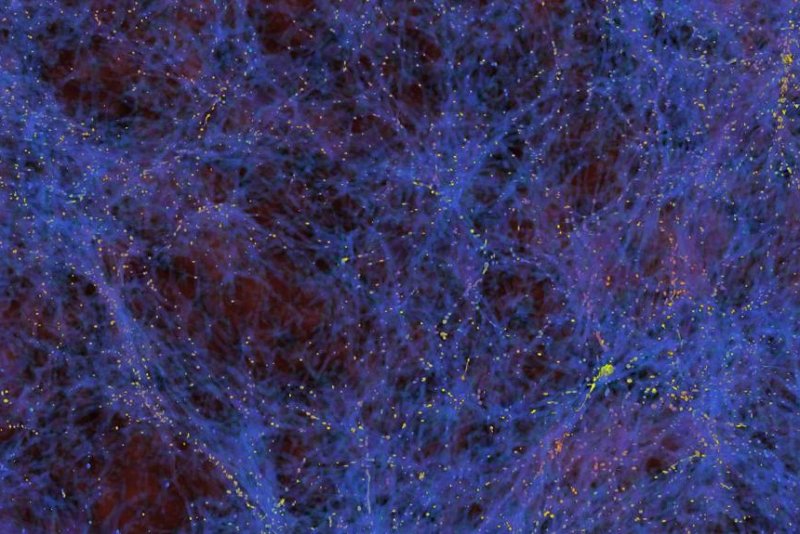Physicists hope a new series of LHC experiments will help them isolate a heavy, slow-decaying dark particle that allows dark matter and energy to interact with regular matter. Photo by Zarija Lukic/Berkeley Lab
April 18 (UPI) -- Scientists at the Large Hadron Collider have developed a new strategy for tracking down dark matter.
Dark matter is apparently everywhere, binding galaxies together. But astronomers can only intimate dark matter's presence by measuring its gravitational effect on regular matter. As such, dark matter and dark energy remains poorly understood.
"We know for sure there's a dark world, and there's more energy in it than there is in ours," LianTao Wang, a researcher at LHC and a professor of physics at the University of Chicago, said in a news release.
To gain insights into this dark world, Wang and his colleagues are trying to isolate the dark particle that they estimate occasionally interacts with normal matter. Researchers predict the elusive particle is heavier and longer-lived than other subatomic particles.
Wang and his research partners suggest that every once in a while -- once or twice a decade, maybe -- this mysterious dark particle gets tangled in the violent mashup of protons produced by the LHC.
"One particularly interesting possibility is that these long-lived dark particles are coupled to the Higgs boson in some fashion -- that the Higgs is actually a portal to the dark world," said Wang. "It's possible that the Higgs could actually decay into these long-lived particles."
When looking for a new kind of elusive particle, scientists face the same problem they always do. It's very difficult to locate a tiny particle inside the violent explosion of subatomic particles created inside LHC's underground tunnels.
However, scientists estimate the dark particle's properties will make it stand out more than others.
"If it's that heavy, it costs energy to produce, so its momentum would not be large -- it would move more slowly than the speed of light," said Fermilab scientist Zhen Liu.
Physicists could simply tweak their algorithms to isolate particles that live and decay more slowly than the rest of subatomic shrapnel. Scientists would be searching for a time difference measuring less than a a billionth of a second, but Wang, Liu and their colleagues are confident LHC's sensors are sensitive enough to do the job.
Scientists are now working to program the LHC's instruments to search for slow-decaying particles when the collider turns back on in 2021. Researchers described their plans for the new dark matter trap this month in the journal Physical Review Letters.
"We anticipate this method will increase our sensitivity to long-lived dark particles by more than an order of magnitude -- while using capabilities we already have at the LHC," Liu said.















